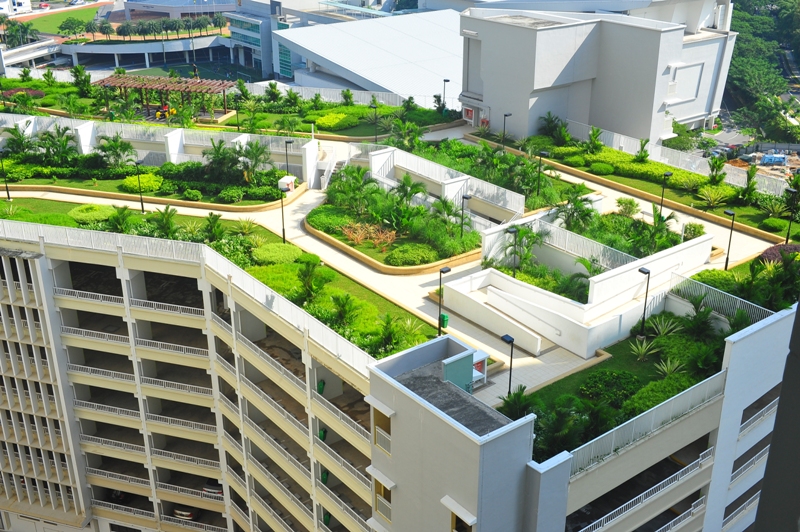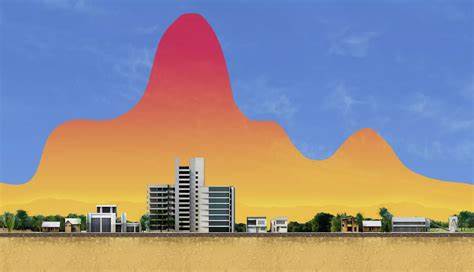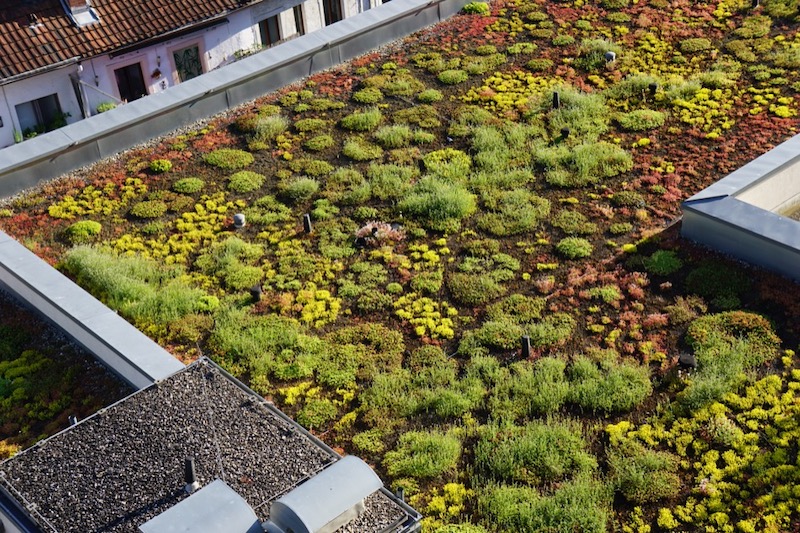
Vertical Gardens: Mitigating Urban Heat Islands and Promoting Green Solutions
Introduction
Urban heat islands are a growing concern due to rapid urbanization and the associated increase in temperatures. This article explores the concept of vertical gardens and their significance in mitigating urban heat islands. These innovative green solutions offer numerous benefits, including temperature reduction, energy conservation, and enhanced air quality.
Historical Background
Urban heat islands have been a phenomenon for several decades. As cities developed and expanded, natural green spaces were replaced by concrete and asphalt surfaces, resulting in increased temperatures. Early concepts of vertical gardens emerged as a response to this issue, aiming to reintroduce greenery into urban environments.
Key Concepts and Definitions
To better understand the importance of vertical gardens, it is essential to define urban heat islands and explore the design principles of vertical gardens. Urban heat islands refer to areas with significantly higher temperatures compared to their surrounding rural areas. Vertical gardens, also known as green walls or living walls, are vertical structures covered with vegetation that can be installed on building facades or freestanding structures.

Main Discussion Points
Benefits of vertical gardens in reducing urban heat islands
Vertical gardens provide multiple advantages in mitigating urban heat islands. They have a cooling effect through evapotranspiration, where plants release moisture into the air, reducing ambient temperatures. Additionally, vertical gardens contribute to a reduction in energy consumption and carbon emissions by providing natural insulation to buildings. Lastly, these green solutions improve air quality and biodiversity by filtering pollutants and providing habitats for birds and insects.
Design considerations and techniques for vertical gardens
The successful implementation of vertical gardens relies on careful design considerations. The selection of suitable plants and structures is crucial to ensure optimal growth and functionality. Additionally, irrigation and drainage systems must be incorporated to provide adequate water supply and prevent waterlogging. Regular maintenance and upkeep are also essential to ensure the longevity and effectiveness of vertical gardens.
Case Studies or Examples
Bosco Verticale in Milan, Italy
Bosco Verticale, or the Vertical Forest, is a renowned example of vertical gardens implemented on a large scale. This project consists of two residential towers covered with a variety of plant species. The greenery helps reduce urban heat island effects by lowering temperatures, improving air quality, and enhancing aesthetics. Architectural design and continuous monitoring have been instrumental in evaluating the effectiveness of this vertical garden.
The Oasia Hotel Downtown in Singapore
The Oasia Hotel Downtown is another prominent example of integrating vertical gardens into urban infrastructure. The building features several sky terraces covered with lush greenery, which helps regulate indoor temperatures and create a microclimate beneficial for occupants. Lessons learned from the construction and maintenance of this vertical garden have further advanced the understanding of its long-term effectiveness.

Current Trends or Developments
Recent research findings on the efficiency of vertical gardens
Numerous research studies have focused on evaluating the efficiency of vertical gardens in mitigating urban heat islands. These studies highlight significant temperature reductions and energy savings achieved through vertical gardens. The findings continue to support the widespread adoption of this green solution.
Innovative technologies and materials for vertical garden construction
Advancements in technology and materials have further enhanced the implementation of vertical gardens. These innovations include lightweight modular systems, automated irrigation, and smart monitoring tools. These developments contribute to the efficiency and ease of constructing and maintaining vertical gardens.
Challenges or Controversies
Debate over the effectiveness of vertical gardens compared to other green infrastructure methods
While vertical gardens offer significant benefits, there is an ongoing debate regarding their effectiveness compared to other green infrastructure methods. Some argue that rooftop gardens or urban forests may yield better results. However, the versatility and adaptability of vertical gardens make them a valuable tool in addressing urban heat islands.
Cost considerations and maintenance challenges
The cost of implementing and maintaining vertical gardens can be a significant challenge. The initial installation costs, as well as ongoing maintenance expenses, need to be carefully considered. Additionally, the regular upkeep of vertical gardens, including pruning, watering, and pest control, requires dedicated resources.

Future Outlook
Potential for widespread adoption of vertical gardens in urban areas
Given the numerous benefits and advancements in vertical garden technology, there is immense potential for their widespread adoption in urban areas. As cities continue to face the challenges of urban heat islands, vertical gardens offer a practical and visually appealing solution.
Advancements in technology and design for more efficient vertical garden implementation
With ongoing research and development, advancements in technology and design are expected to further improve the efficiency and effectiveness of vertical gardens. These advancements may include the integration of renewable energy sources, advanced irrigation systems, and innovative plant selection.
Conclusion
In conclusion, vertical gardens play a crucial role in addressing urban heat islands. With their ability to reduce temperatures, conserve energy, and enhance biodiversity, vertical gardens offer a sustainable green solution for urban environments. It is imperative that further exploration and implementation of vertical gardens are pursued to create healthier and more sustainable cities.0




